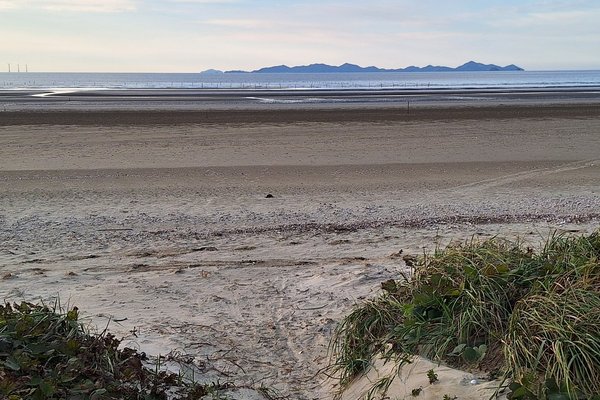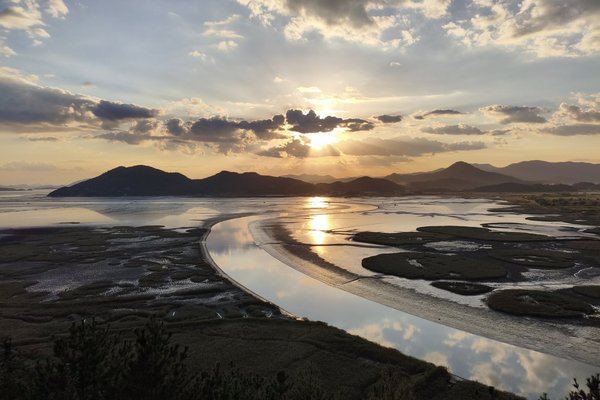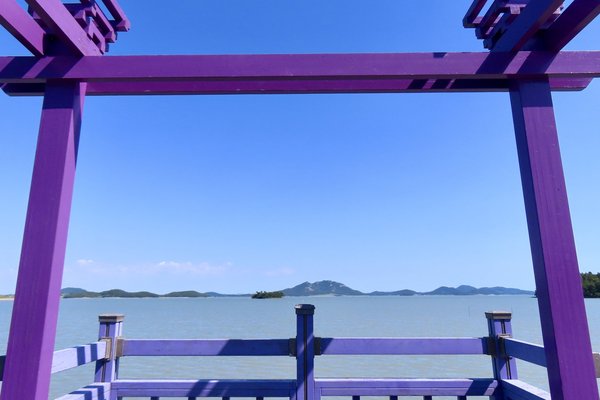Republic of Korea
Getbol, Korean Tidal Flats
The Getbol, Korean Tidal Flats comprise productive tidal ecosystems that support millions of migratory waterbirds.
The four protected coastal wetlands in the Yellow Sea support consist of islands, rocky shores, mud flats and beaches. In addition to the migratory birds such as Spoon-billed Sandpiper and Chinese Egret, the area is rich in marine invertebrate species.
Community Perspective: Suncheon Bay Wetland Reserve is the most accessible area (“like an Ecological Disneyland”) - it has elevated wooden walkways, boat tours and a museum. The small city of Suncheon is an excellent hub, also for other nearby sights.
Site Info
Official Information
- Full Name
- Getbol, Korean Tidal Flats (ID: 1591)
- Country
- Republic of Korea
- Status
-
Inscribed 2021
Site history
History of Getbol, Korean Tidal Flats
- 2021: Advisory Body overruled
- IUCN advised Deferral
- 2021: Inscribed
- Inscribed
- 2019: Incomplete - not examined
- As Getbol, Korean Tidal Flat
- Type
- Natural
- Criteria
- x
Links
- UNESCO
- whc.unesco.org
- Official
-
- scbay.suncheon.go.kr — Suncheon Bay Wetland Reserve (Korean)
- Related
-
- geocha.co.kr — Mud experience area.
All Links
UNESCO.org
- whc.unesco.org — whc.unesco.org/
Official Website
- scbay.suncheon.go.kr — Suncheon Bay Wetland Reserve (Korean)
Related Resources
- geocha.co.kr — Mud experience area.
Community Information
- Community Category
- Natural landscape: Marine and Coastal
Travel Information
One million visitors or more
Yeosu Hotspot
< than 25km from Suncheon Bay and under 50km from Boseong Tidal Flats
Recent Connections
-
Phased inscriptions
Two phases, conditional upon inscriptio…
-
Yeosu Hotspot
< than 25km from Suncheon Bay and unde…
-
Translated Toponyms
"Getbol" is Korean for mudflats or tida…
Connections of Getbol, Korean Tidal Flats
- Geography
-
-
Archipelagos
"The area has an OUV that reflects the diversity of the island-type (archipelagic) tidal flat ecosystem and its geological and geomorphological features." "The nominated property includes more than 900 islands, between which are vast areas of tidal flats." (Nomination text, p. 17, 51) -
Yellow Sea
"Situated in the eastern Yellow Sea on the southwestern and southern coast of the Republic of Korea" (Official description) -
Estuary
"Each component represents one of four tidal flat subtypes (estuarine type, open embayed type, archipelago type and semi-enclosed type)." (Official description)
-
- Trivia
-
-
One million visitors or more
"Every year, the 5 tidal flat visitor centers in the nominated property welcome 3,000,000 people" (Nomination text, p. 211)
-
- History
-
-
Shell Mounds (Middens)
"Shell mounds found in different locations along the coast provide evidence that fishing activities have taken place in the tidal flats for thousands of years. The tidal flats monitoring results show that traditional fishing activities have successfully maintained the tidal flat ecosystem in a balance that includes human processes." (Nomination text, p. 97)
-
- Ecology
-
-
Otters
"Terrestrial otters (Lutra lutra) also from time to time come down to salt marshes to feast on tidal organisms. Such feces of the otter have been found in many uninhabited islands (22.3% of total uninhabited islands) in Shinan Getbol not to mention near the other component." (Nomination text, p. 90) -
Bird Migrations
Eastern Asian-Australasian Flyway -
Mudflats
"one of the world’s largest and most productive tidal flat ecosystems" (OUV) -
Rias
One of the geomorphological settings are "[r]ocky islands and island-type tidal flats on a ria coast, rocky islands with high geomorphological relief and ample supply of terrigenous sediments." (Nomination text, p. 163) -
Tidal effects
diverse tidal flat ecosystems. Whilst all component parts are representative of archipelagic tidal flats in the Yellow Sea, each component part represents one of four tidal flat subtypes of Getbol: the estuarine type, open embayed type, archipelago type and semi-enclosed type. (AB ev) -
Molluscs
"Endemic fauna includes Mud Octopuses (Octopus minor), Yellow Sea Sand Snails (Umbonium thomasi), =), as well as various suspension feeders like clams" -
Critically endangered fauna species
Critically Endangered Spoon-billed Sandpiper (AB ev) -
Peat
"Sand dunes behind the outer islands of Shinan Getbol host sedimentary deposits as thick as 40 m. At the base of the deposits, well rounded gravel lags are present. Above the gravel lag layer, mud facies containing coarse sands and several layers of peat occurs as well as homogeneous mud facies." (Nomination text, p. 128) -
Dunes
"[E]ach tidal flat has evolved into a coastal environment that houses diverse habitats including mud flats, sand flats, mixed flats, gravel beaches, rocky substrates, tidal beaches, sand dunes, tidal channels and tidal gullies." (Nomination text, p. 64)
-
- World Heritage Process
-
-
Extension Supported
"should be implemented in time for consideration at its 48th session in order to fully address the requirements of the Operational Guidelines: Submit a single Phase II nomination to include nine additional components in order to further strengthen the Outstanding Universal Value (OUV) of this property, fully taking into account the evaluation of IUCN" (Decision 44 COM 8B.6) -
Extensions on Tentative List
Getbol, Korean Tidal Flats (Extension) with 3 further areas -
Recommended for combination by AB
IUCN had wanted a Deferral to explore "potential future transnational serial nominations, and/or extensions and, in particular, to coordinate with the State Party of China in relation to the anticipated Phase II nomination for Migratory Bird Sanctuaries Along the Coast of Yellow Sea-Bohai Gulf of China, potentially through the 2007 Korea-China Agreement on the Protection of Migratory Birds" -
Potential Transboundary sites
With China's Migratory Bird Sanctuaries -
Phased inscriptions
Two phases, conditional upon inscription of the first one: "Submit a single Phase II nomination to include nine additional components in order to further strengthen the Outstanding Universal Value (OUV) of this property, fully taking into account the evaluation of IUCN" (Decision 44 COM 8B.6)
-
Inscribed on a single criterion only
X
-
- Human Activity
-
-
Shipwrecks
Sinan Shipwreck. Located near Imjado and Jeongdo Islands. Designated as a Historic Site 'Sea Area with Sunken Relics, Sinan'See en.wikipedia.org
-
Salt
"Taepyeong Salterns, the largest saltern in Korea, the Stone Salt Silo, which is now used as the Salt Museum (both located in Jeongdo, Sinan-gun) are designated as Registered Cultural Heritage of Korea. In addition, Jeong-do, Sinan-gun is designated as a Tidal Flats Provincial Park in Korea, and is also a member of Cittaslow." - UNESCO Description Salterns "The saltpans in the buffer zone of the coastal areas of Shinan Getbol produce sun-dried salt using traditional methods. As of 2015, 944 saltpan farmers have obtained permits for their farms of 2,969 ha in total. These saltpans are environmentally harmless and do not cause any damage to the OUV of the nominated property." - Nomination File Getbol, Korean Tidal Flats
-
- WHS on Other Lists
-
-
Ramsar Wetlands
The nominated property also overlaps with four Ramsar sites (Seocheon, Gochang, Jeungdo and Suncheon Bay) (AB ev) -
World Biosphere Reserves
three UNESCO Biosphere Reserves (Shinan Dadohae, Gochang and Suncheon) (AB ev)See www.unesco.org
-
Global Geoparks
Jeonbuk West Coast UNESCO Global Geopark -
IUGS Geological Heritage Sites
Getbol Tidal Flats -
Plant WHS not in a CPD
"some 2,150 plant and animal species have been recorded" (OUV)
-
- Timeline
-
-
Holocene
For the migratory birds
-
- WHS Hotspots
-
-
Yeosu Hotspot
< than 25km from Suncheon Bay and under 50km from Boseong Tidal Flats
-
- WHS Names
-
-
Translated Toponyms
"Getbol" is Korean for mudflats or tidal flats. The English translation is given in full name.
-
News
No news.
Recent Visitors
Visitors of Getbol, Korean Tidal Flats
- Alexander Lehmann
- Alexander Parsons
- Alex Goh
- Bigboss99
- Bill Maurmann
- bossc
- Can SARICA
- chenboada
- Cheryl
- Christravelblog
- Clyde
- CugelVance
- cutecid
- Dimitar Krastev
- Els Slots
- Errol Neo
- Eva Kisgyorgy
- Frederik Dawson
- GabLabCebu
- Hadrianus
- Hammeel
- Harry Mitsidis
- inomusay
- Javier
- JL
- Joel on the Road
- John Smaranda
- Kim, Soo-youn
- Kristin
- Kyle Magnuson
- Luboang
- Maciej Gil
- Mihai Dascalu
- nan
- Patrik
- Paul Schofield
- Philipp Peterer
- Roman Bruehwiler
- Shandos Cleaver
- Simonh
- Solivagant
- Xiquinho Silva
- Zoë Sheng
Community Reviews
Show full reviews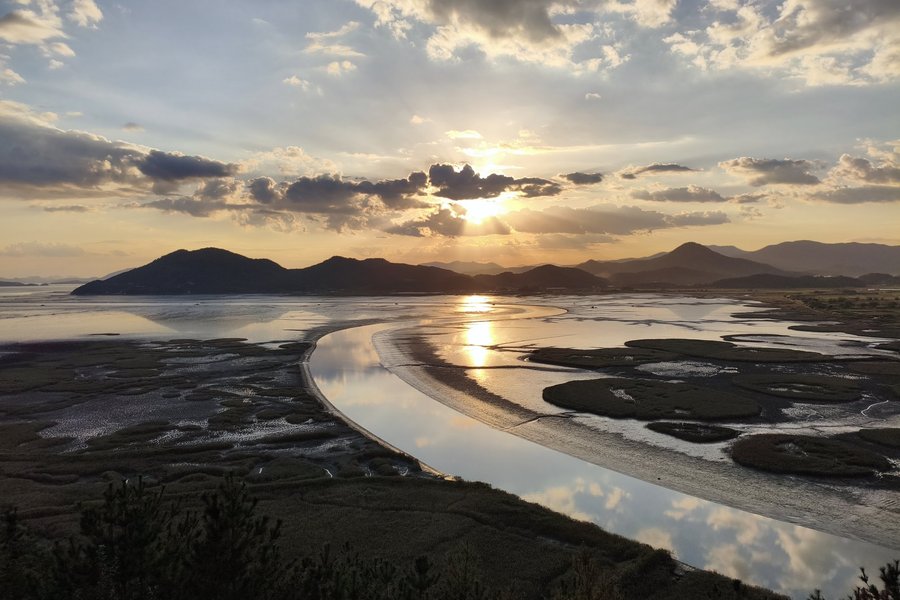
Time of the visit:the 23rd of oct.,2025
The Getbol Suncheon Bay in South Korea is a UNESCO-listed wetland known for its vast tidal flats and rich biodiversity( lots of birds there as well as crabs). It is a vital sanctuary for migratory birds, offering visitors scenic trails, observation decks, and a glimpse into the region’s unique coastal ecosystem.
My expectations for this World Heritage Site were low. The wetlands sounded pretty boring. I took the bus from Busan in the morning and locked my luggage in the lockers at the Suncheon bus terminal. Google Maps is pretty useless in South Korea, with one exception: it shows the bus numbers and routes. Bus 66 is supposed to run fairly frequently, so I went to the nearby bus stop. Sure enough, bus 66 arrived at the stop about five minutes later.
About 20-25 minutes later, I was at the main entrance gate and was quite surprised by the number of tourists and the tourist infrastructure. I paid the 10,000 won entrance fee and went first to the museum, which also has an observation deck. First, I watched a short film about the area. Funnily enough, a man and his wife sat down next to me. In bad English, he pointed out to me that the fisherman in the film was his brother. As I was about to begin exploring the museum, an English-speaking volunteer approached me and offered to give me a tour of the museum. I accepted, but the insight …
Keep reading 2 comments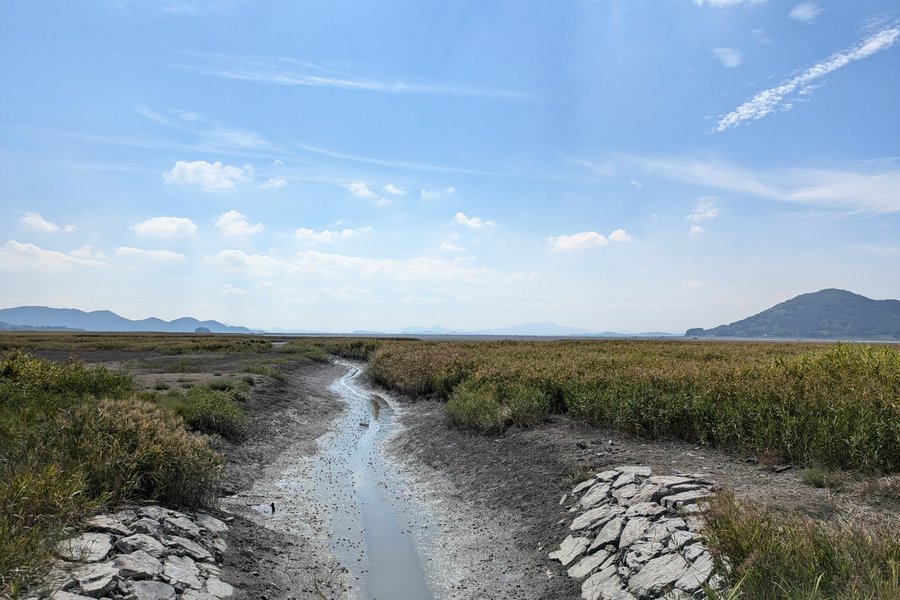
As a Wadden Sea fan and a native of Schleswig-Holstein, I do have a soft spot for tidal mud flats. It was on my first visit to Korea more than 20 years ago, sitting on the airport train from Incheon to Seoul, that I spotted what looked like Korea’s own “Wadden” Sea along the way: the tidal flats.
On that trip, we never made it to the coast, so I didn’t get to explore the mudflats. On my second trip to Korea, we made it to Yeosu — so we were nearby — but again, we didn’t explore the mudflats, at that point of time not a world heritage site yet. On my third visit to Korea in 2024, we included a stop at Suncheon Bay Nature Reserve. We briefly tried to get from the Gochang Dolmen site to the Gochang Tidal Flats (and it seems you can arrange this at a reasonable price by haggling with a cabbie). But we didn’t make a real effort as our day was packed getting to Pilam and then onwards to very pleasant Gwangju.
Suncheon Bay Nature Reserve is very scenic and offers plenty of activities. Behind the site at the back exit (you can reenter), there’s a bike rental place — you can cycle along the dike and take in the views of the wetlands and mudflats. On site, there’s a museum and plenty of trails, including a walk through the wetland that eventually takes you up a hill to a viewpoint. …
Keep reading 0 comments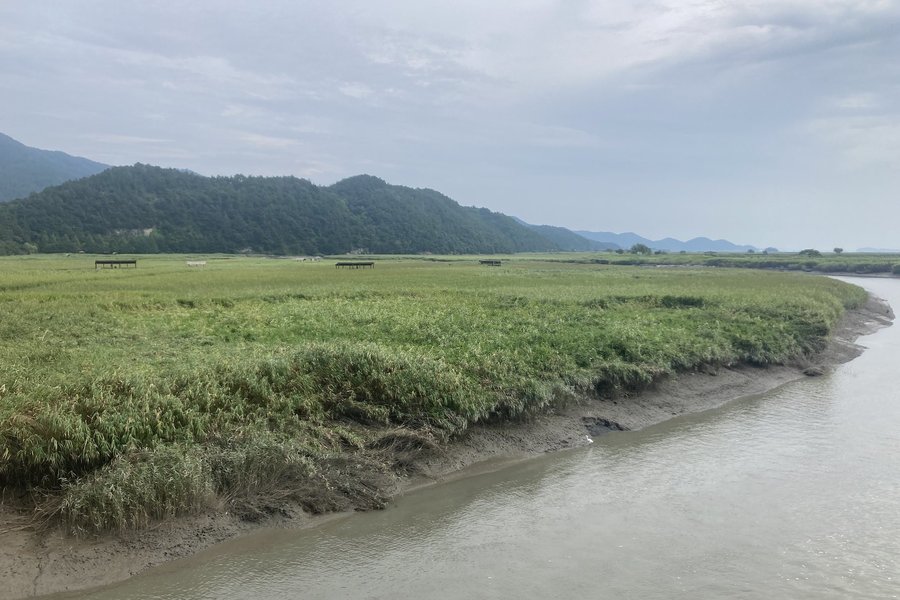
Although I visited the same location (Suncheonman) as the other reviewers, I have a few additional observations to share from my visit in early September 2024:
- Viewtower is closed for renovation: the Yongsan observatory, from where you could take the pretty sunset pictures of the salt marshes as Clyde did, has been closed for renovation since the end of last year. It is unclear for how long, but they even have the fact printed into the booklet you receive at the entrance, so it will be a while. Without access to the tower, a visit is hardly worth it and I think they should at least give a discount on the entrance fee (now 10,000 Won (7 EUR) – expensive for Korean standards).
- Core zone fetishists will have a hard time: the inscribed area of this component only comprises coastal waters (with sediments and islands), which are underwater or all-mud depending on the tide. It’s not possible to put your foot inside. You have a view of it from the tower (when it’s open) or (like I did) you can walk the ‘World Heritage path’ which starts to the right just before the main bridge leading to the reeds boardwalk. But even from the viewpoints along that path, all you’ll see is a sea of reeds.
- The name of the WHS is odd: even for a natural site they felt the need to add “Korean” to the English title as they do with the …
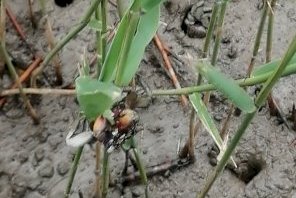
Here to give the Getbol its first review on this site since inscription, I've included it on my June 2023 trip to Korea. I originally did not think much of these mudflats... there are already so many Eurasian migratory bird sites, I'd already seen the little mudflats in Mont Saint Michel and Itsukushima, and if the tidal variation were the star of the show, I would've much rather wanted to see the Bay of Fundy. Well, the pictures of Suncheon Bay did really look quite pretty, and as every reviewer here so far has given nothing but praise to this field of reeds, I figured it was worth fitting into my trip. Spoiler alert: it absolutely was! As a result of choosing Suncheon, however, I do not have much to add to previous reviews other than tips on how to go and a few of my personal observations.
Suncheon is a small city with huge potential for tourism, and they sure know it! At the bus stop outside the intercity bus station, you can catch a direct bus to a good selection of featured destinations that could fill up more than an entire day, including Seonamsa, Songgwangsa, Naganeupseong, and of course, Suncheonman Nature Reserve ("man" means bay). The southwestern hospitality really shines through here, especially with the tourist information officer at the station who got out and closed her booth to lead us to the bus stop a block away. Just take bus #66 (also passes the train station …
Keep reading 0 comments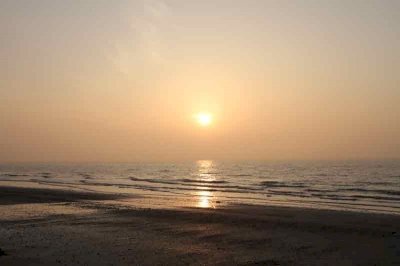
I visited two locations of the Tidal Flats, up for inscription in 2020 (or maybe 2021, due to coronavirus): Suncheon Bay and the Gochang Tidal Flats.
Suncheon BayThis location is ideal and probably the best choice, when the tidal flats become a WHS. Suncheon Bay is close to Naganeupseong TWHS (worth a visit) and Seonamsa monastery WHS.
You need to visit the Suncheon Bay Ecological Park to be able to see the iconic view shown in Clyde’s and Kyle’s pictures. The ticket fee is high and you even pay for parking (very rare in Korea). The park itself is like an Ecological Disneyland. You walk on well-maintained wooden paths, there are restaurants, boat tours and a big museum. Walk to the observatory for the tidal flats where you can admire them from three different levels.
Gochang Tidal FlatsThe tidal flats are rather a very long beach with remarkable high and low tide. I visited in February, but it was clear that this is where the Koreans hit the beach in summer. I started at Dongho Beach and drove down the coast along a small road. The closest WHS is Gochang Dolmen Site. Other than that it’s off the route. I specifically chose to visit this component, because I wanted to see more of this nomination than just the obligatory Suncheon Bay.There are some restaurants, but it’s nowhere near how we exploit beaches in Europe. As it was high tide, the beach was normal sized. I …
Keep reading 0 comments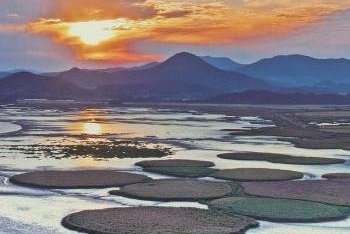
I visited this tentative WHS in April 2017 after a 2.5hr drive from Busan. I visited the Suncheon Bay Wetland Reserve which is also recognised as a Ramsar Wetland of International Importance.
The elevated wooden walkways without railings over the muddy tidal flats reminded me of Plitvice in Croatia. The sheer amount and variety of different species of crabs was impressive since their food supply is abundant. I also managed to spot a number of waders (also a pair of Spoon-billed Sandpipers) and warblers. The highlight species though were the mudskippers, amphibuous fish with limbs!
The reed walks and hides are pleasant but good digiscopes, binoculars and patience are required to be able to get a glimpse of the more interesting birdlife. The famous viewpoint at sunset from the Mt Yongsan Observation Platform is well worth the 1.3km uphill hike.
The mudflat area of Korea's western coast is one of the world's top five mudflats, ranked alongside the eastern coast of Canada, the eastern coast of the United States, Germany's North Sea coast, and the mudflats of the Amazon River basin. The mudflat results from the prolonged accumulation of sand or clay carried by tidal currents from the ocean seabed. It is hidden underwater during high tides and revealed during low tides.
An interesting feature of these mudflats is the purification of contaminants that flow into the ocean. After contaminants produced by factories and homes seep into the ocean, the mudflat's sedimentary layer filters them out like filter paper. The …
Keep reading 0 comments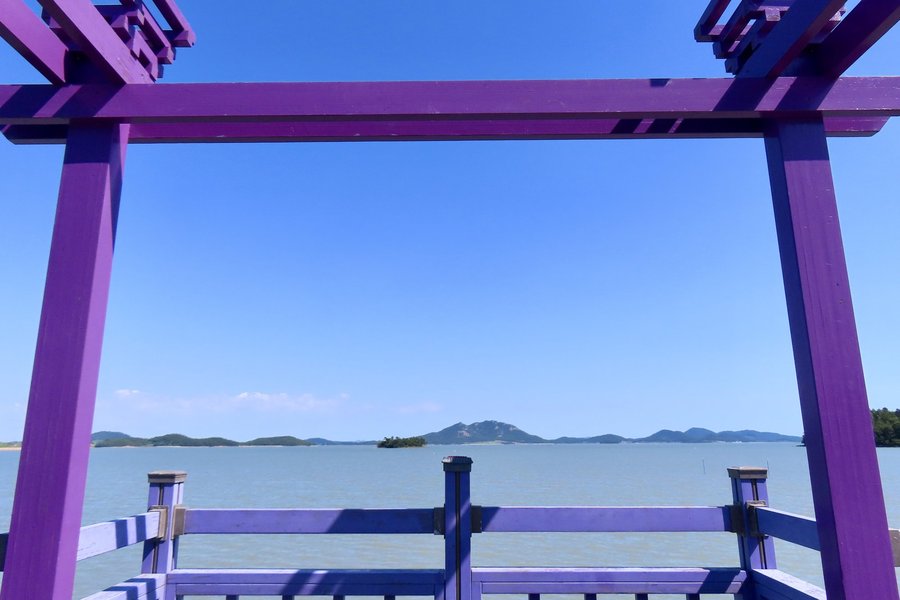
My two visits to inscribed getbol were lovely and a photographer's dream. However, I also want to share how my experience could have been greatly enhanced. Firstly, both components I visited were affected by timing and length of stay.
Korean Getbol (Collage)
1) Ideally you experience the getbol during low tide and high tide
2) Spring and Fall are the best times to visit Korea's getbol, both for temperatures and viewing birds
Boseong-Suncheon Getbol (road trip, personal car)
I was wowed by the views and the reed fields. Like other reviewers this is a convenient location and therefore its been the primary location for our community. For shorter visits and time restrictions, Suncheon Bay remains the go-to Getbol component.
Shinan Getbol (tour bus from Gwangju)
Shinan is vast and in fact larger than all other components and even extensions combined. I've identified 2 locations for visitors based on accessibility and for a the best experience enjoying the getbol.
1) One to two night stay in Jeungdo with your own vehicle will be an ideal getbol experience. Jjangttungeo Bridge allows you to walk across the getbol to Jjangttungeo Beach. There are other locations like Hwado Nodu-gil (road), which connects Jeungdo with a tiny isle. Moreover, there are accommodations, including pensions and small resorts. An additional plus, this route passes through the Muan Tidal Flat (extension that will be inscribed in 2026), which includes a large eco center, wooden boardwalks, and gear to walk into the getbol. [Note: This is based on …
Keep reading 0 comments
